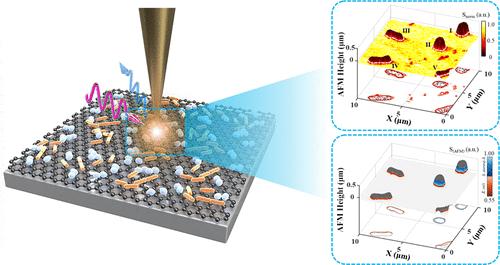通过太赫兹近场电介质纳米成像诊断单细菌
IF 8.2
2区 材料科学
Q1 MATERIALS SCIENCE, MULTIDISCIPLINARY
引用次数: 0
摘要
单细菌诊断方法具有前所未有的精确度和快速的周转时间,是促进从经验治疗到个性化抗感染治疗过渡的有希望的工具。太赫兹(THz)辐射是一种用于识别病原体的尖端技术,可以对分子间振动模式和细菌介电特性进行无标签和非破坏性检测。然而,这种基于单个介电特性的检测和不匹配的空间分辨率对于各种病原体的单细菌鉴定是有限的。在这里,我们通过定制太赫兹散射型扫描近场光学显微镜展示了一种单细菌太赫兹介电纳米成像(STDN)策略。通过理论建模和近场测量对细菌的太赫兹纳米图像进行了解释和证实。通过同步跟踪细菌的固有介电特性和外在形态,该策略在2小时内对训练好的分类器进行物种鉴定和抗生素药敏试验的准确率分别达到99.3%和91.6%。这种概念验证的STDN策略可能推动精确的细菌感染管理,并有助于抵消抗生素耐药性。本文章由计算机程序翻译,如有差异,请以英文原文为准。

Single-Bacterium Diagnosis via Terahertz Near-Field Dielectric Nanoimaging
Single-bacterium diagnostic methods with unprecedented precision and rapid turnaround times are promising tools for facilitating the transition from empirical treatment to personalized anti-infection treatment. Terahertz (THz) radiation, a cutting-edge technology for identifying pathogens, enables the label-free and non-destructive detection of intermolecular vibrational modes and bacterial dielectric properties. However, this individual dielectric property-based detection and the mismatched spatial resolution are limited for the single-bacterium identification of various species of pathogens. Here, we demonstrate a single-bacterium THz dielectric nanoimaging (STDN) strategy by customized THz scattering-type scanning near-field optical microscopy. The THz nanoimages of bacteria are explained and confirmed by theoretical modeling and near-field measurement. By synchronously tracking the bacterial intrinsic dielectric property and extrinsic morphology, the strategy achieved 99.3% and 91.6% accuracy in species identification and antibiotic susceptibility testing with the trained classifier within 2 hours. This proof-of-concept STDN strategy may propel precise bacterial infection management and help to counteract antibiotic resistance.
求助全文
通过发布文献求助,成功后即可免费获取论文全文。
去求助
来源期刊

ACS Applied Materials & Interfaces
工程技术-材料科学:综合
CiteScore
16.00
自引率
6.30%
发文量
4978
审稿时长
1.8 months
期刊介绍:
ACS Applied Materials & Interfaces is a leading interdisciplinary journal that brings together chemists, engineers, physicists, and biologists to explore the development and utilization of newly-discovered materials and interfacial processes for specific applications. Our journal has experienced remarkable growth since its establishment in 2009, both in terms of the number of articles published and the impact of the research showcased. We are proud to foster a truly global community, with the majority of published articles originating from outside the United States, reflecting the rapid growth of applied research worldwide.
 求助内容:
求助内容: 应助结果提醒方式:
应助结果提醒方式:


